 May 7, 2025
May 7, 2025Why are Hindu weddings even more special, and how connected are they to the traditions of this world? Hindu weddings are a beautiful occasion that reflects true love, Indian traditions, and culture. Every step of Saptapadi is a promise, an appreciation of their passion with pledges and commitments that are respected and mutual.
There are 7 promises that the newlywed couple makes during Saptapadi. This is an essential element of the Hindu wedding ceremony, each of them has historical and religious meaning. Each of them points them towards a loving, growing, balanced life so their marriage is a true partnership. These timeless promises are part and parcel of Hindu wedding ceremonies, which give value and commitment to the marriage.
In this blog, I will attempt to decode the meaning of Saptapadi, the significance of which is well-recognized in India. To elaborate on the seven vows and what they imply for the successful marital experience we have to analyze them separately. Read this guide to understand these lovely customs.
Concept of Saptapadi
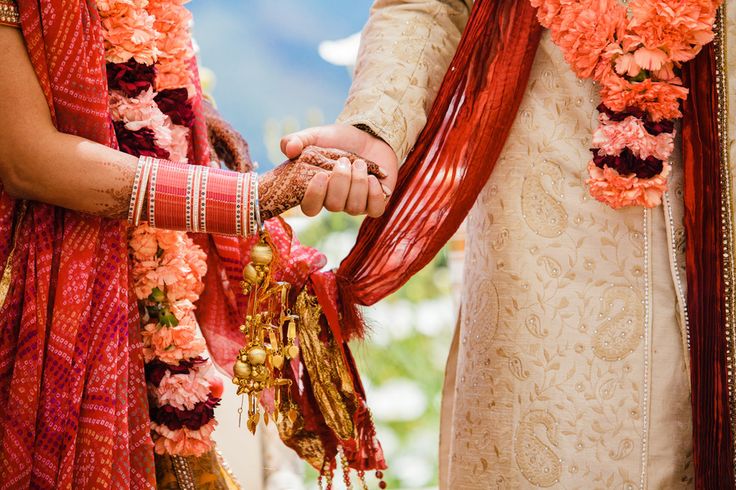
Every Hindu wedding includes the Saptapadi. The word means ‘seven steps’ and it is one of the important parts of the ritual. In this tradition, the bride and groom move around the fire seven times. These vows form part of their married life story.
There are 7 significant Hindu wedding vows, and they are meant to offer couples a clue on how to live a happy married life. The pledges signify important areas of marriage; honor, fidelity, and wealth. The holy fire serves as a divine witness, symbolizing these promises’ purity and unbreakable bond. These timeless rituals are at the heart of every Hindu wedding, making the ceremony truly special.
Each of the 7 vows of Hindu marriage can be understood as a commitment to shared goals and values. The Hindu wedding vows are a guide for a strong and meaningful relationship. They are based on love and trust. These vows not only bring two people together but also connect their families and the community for life.
The Saptapadi is more than just a ritual; it’s a spiritual journey that turns two people into life partners. By taking these seven steps, the couple builds a marriage based on equality, understanding, and devotion.
History of Saptapadi or 7 Phere
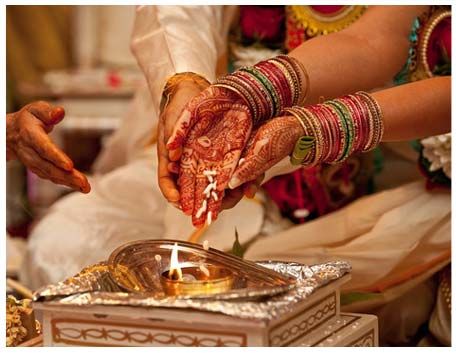
The Saptapadi in Hindu weddings originate from the Vedic records, which are considered the originals of Hinduism. This holy operation was transformed over time but stayed loyal to Dharma (justice), Artha (wealth), Kama (love), and Moksha (enlightenment).
Traditional marriage could be described as procreation in which two individuals become joint companions and partners in the tasks of life. These seven steps of Hindu wedding vows were established to lead a couple to a happier and more fulfilled life. Every promise is devoted to a unique aspect of marriage starting with duties and ending with spirituality. These vows give couples a good starting point to work on a wonderful life replete with love and meaning.
Step-by-Step Overview of Saptapadi
The ritual also known as the Saptapadi, which is seven steps, is a vital part of the Hindu wedding ceremony. The preparation for this ritual is performed with the couple standing side by side either hand in hand or with the end of the clothes both tied together and ends where the husband and wife are considered to be legally wed. Here’s a step-by-step guide to understanding the Hindu wedding vows seven steps:

1. First Step: Nourishment
The first step is to say that you will take care of one another and build a life of prosperity and happiness. This vow makes it clear that good eatables and healthful ways will help one to have a happy home. They build on it their happiness and prosperity.
“Om Eshe Ekpadi Bhava”
Groom’s Vow: With this step, I’m entering into caring for a family in order for us to benefit as a family unit, and that will provide support and nurture you and the family.
Bride’s Vow: With this step of mine, I pledge to contribute to the running of our household while ensuring we live in tranquility.
2. Second Step: Strength and Health
In the second step, the couple assures that they will build them up further and get physically and mentally developing. They worry about what they can do for each other to be the best that they can be.
“Om Urje Dwipadi Bhava”
Groom’s Vow: With this stage, I stand beside you by ensuring shelter, strength, and security so that we might be knit into a cohesive life.
Bride’s Vow: Along this way, I promise to share my strength and comfort you and the family within good times and bad; I’ll always share your troubles and your joys.
3. Third Step: Prosperity
The third step is that both individuals, two partners, receive an agreement that they are willing to carry on the cooperation for success and to achieve spiritual objectives. They promise the creation of protection and happiness for the nation and the family in the future.
“Om Raaysposhaay Tripadi Bhav”
Groom’s Vow: The last pledge in this third phase commits me to work tirelessly towards our comfort and happiness, directed to a stable, safe, and abundant lifestyle.
Bride’s Vow: In this third phase, I commit to managing wisely and nurturing the resources entrusted to us in furthering the economic and social well-being of our family.
4. Fourth Step: Family and Love
In the fourth process of the concept map, the couple pledges to honor and love the family. They get into the union promising to bring into the marriage love and harmony.
“Om Maayobhavay Chatushpadi Bhav”
Groom’s Vow: Fourthly, I promise to build a loving and respectful relationship by cherishing and building a happy and harmonious marriage with you as my partner.
Bride’s Vow: In this fourth stage of the ritual process, I shall nurture our family with care, affection, and love, instilling the gift of life with joy and together.
5. Fifth Step: Offspring and Care
In the fifth step, the couple vows to cherish and nourish the children they will produce in the future. They promise to give them education, love, and strong values instilled in them. They guarantee the positive and ethical further evolution.
“Om Prajabhyaha Panchpadi Bhav”
Groom’s Vow: I promise to love and cherish our future children throughout the fifth step, raising them with love and care.
Bride’s Vow: In this fifth step, I commit to love and nurture our children, surrounding them with an environment of love, support, and nurture.
6. Sixth Step: Friendship and Trust
In the last step to marker three, the couple vows to be true companions because they will develop trust, loyalty, and respect between them.
“Om Rutubhyaha Shatpati Bhav”
Groom’s Vow: With this sixth step, I commit to being your best friend, holding your hand with trust and companionship from this day onward.
Bride’s Vow: In this sixth step, I promise to stand by our friendship under all conditions, to honor your trust, and in every circle of life, to be a steadfast companion.
7. Seventh Step: Spiritual Growth
In the last step, the man and the woman enumerate all the principles of marriage that they are ready to fulfill and the last one is spiritual growth. They are willing to live a righteous and devoted life.
“Om Sakhe Saptapadi Bhav”
Groom’s Vow: For this seventh step, I commit myself to nurture a godly life and inner harmony, aspiring for Brisbane truths hand in hand with you.
Bride’s Vow: I promise to move with you on the path of spiritual growth so as to lift each other’s being throughout this journey of life.
Different Religions and Saptapadi Relevance
The concept of Saptapadi—taking seven sacred steps—holds profound significance in Hindu weddings. Let’s explore the relevance of Saptapadi and its parallels in different religious traditions.
1. Hinduism and Saptapadi
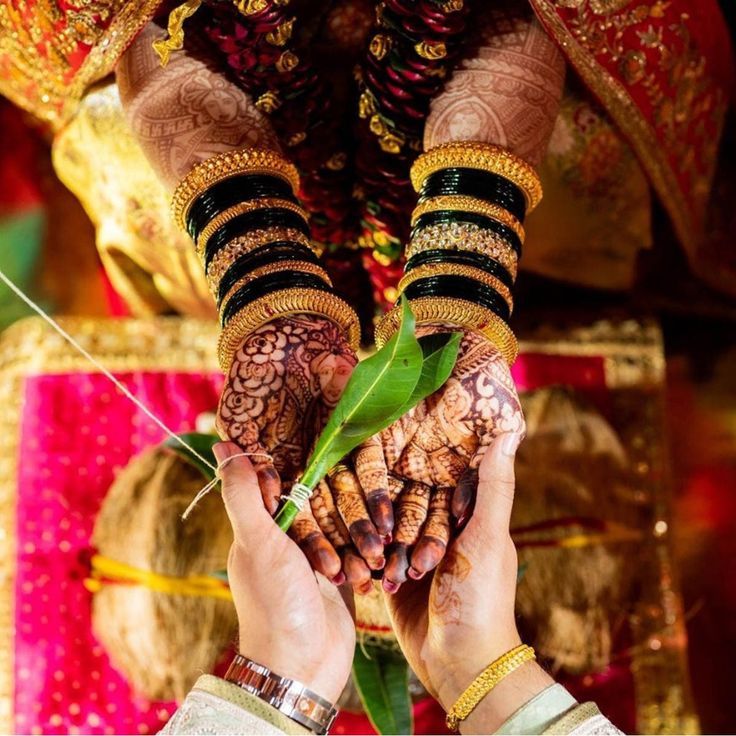
Hindu people follow the marriage rites and customs that involve seven vows of the couple during the marriage ceremony. All the movements present an assurance to the couple for a happy and healthy life. These are respect, prosperity for oneself, and spiritual richness for the other. These promises are used to lead couples through their marriage life.
2. Parallels in Buddhism
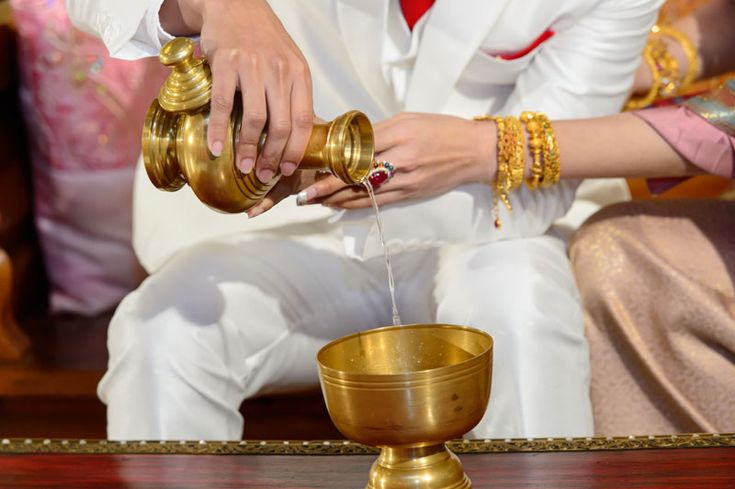
There seems to be no direct parallel of Saptapadi in Buddhism. It teaches its followers to practice patience, care for each other, and to help one another when it comes to relationships. These values also find an echo in the 7 vows of Hindu marriage. It creates love and tolerance between the partners.
3. Islamic Traditions
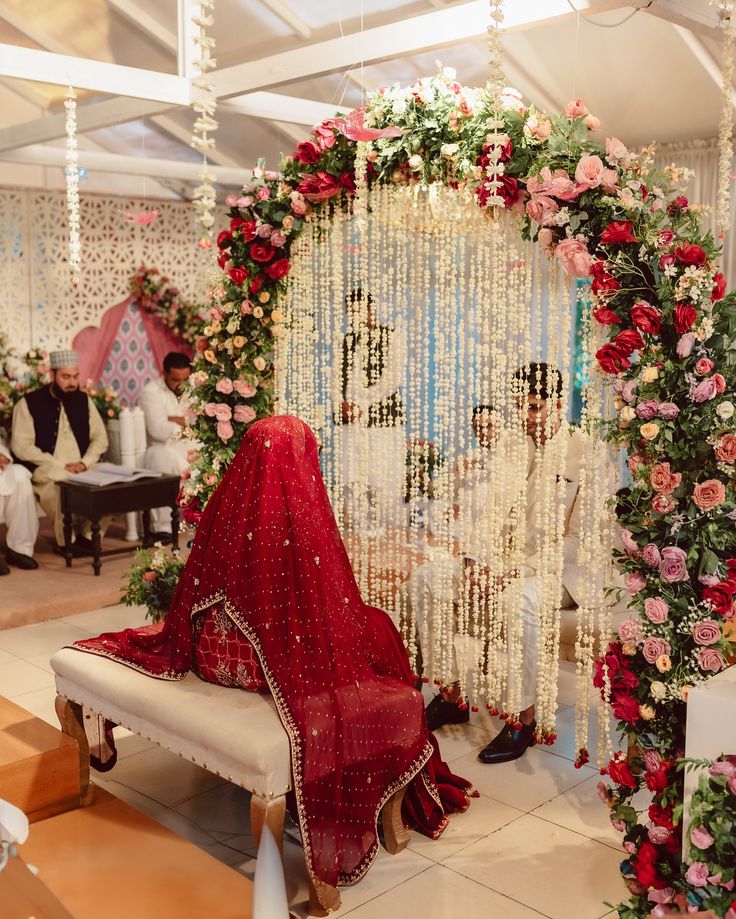
The Nikah of the Islamic wedding involves vows. More specifically, the husband and wife vow to meet their obligations. At the same time, to be concerned with the realization of the other party’s rights.
4. Christianity and Wedding Vows
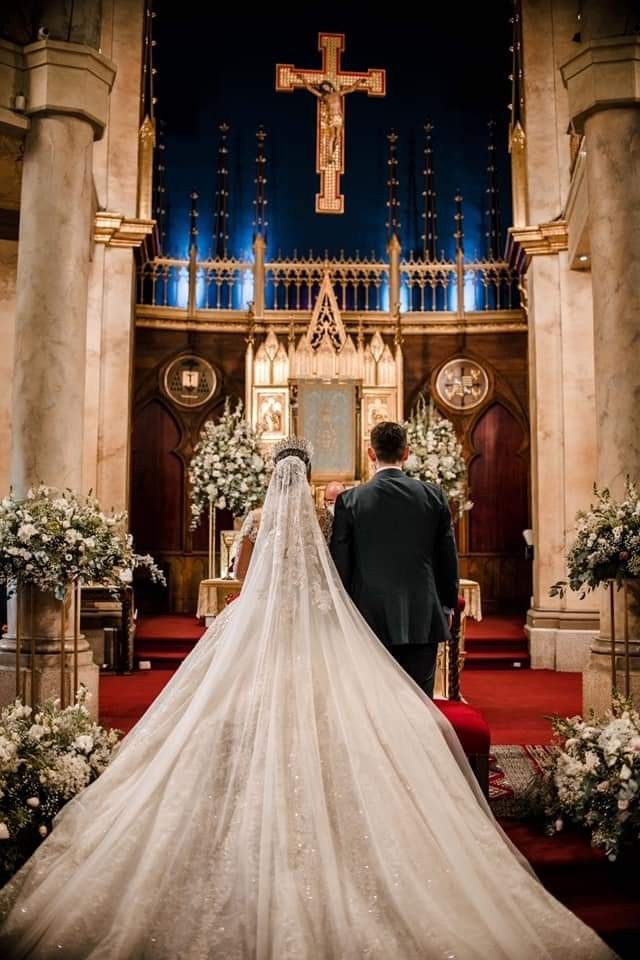
In Christian marriages, couples make vows before God. They promise to love and support each other through both good times and bad. This mirrors the 7 pheres of Indian marriage, which emphasize lifelong support and unity.
5. Parsi and Jewish Weddings
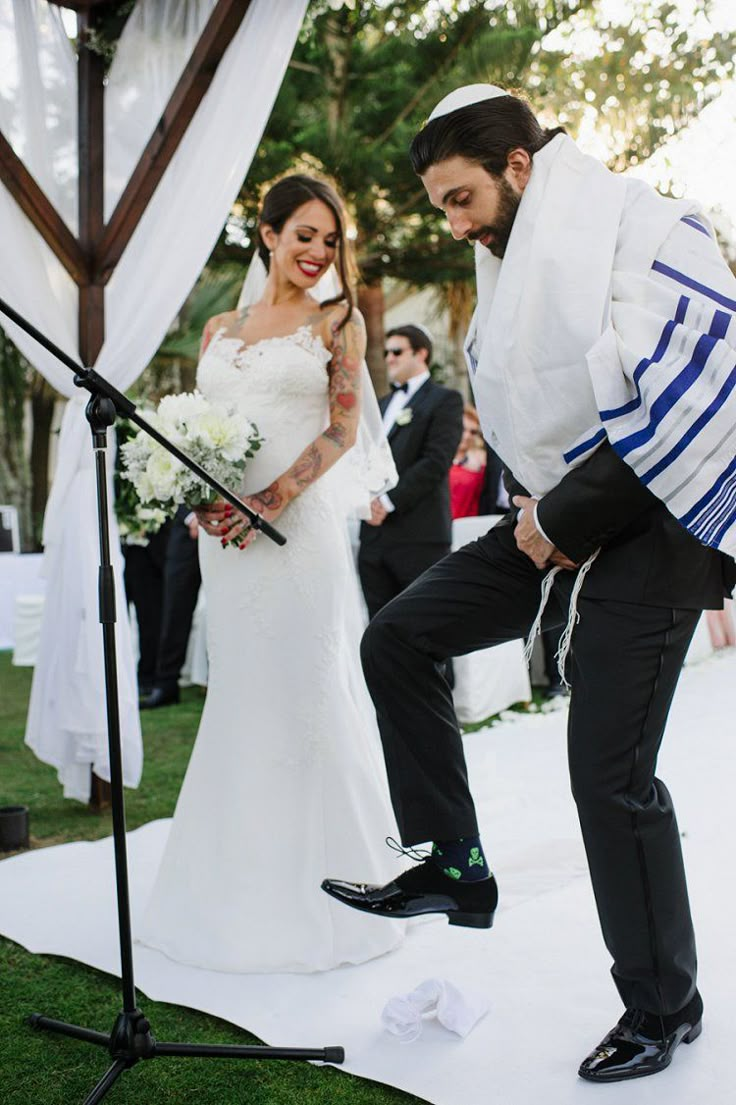
Parsi and Jewish customs of marriage also center on respecting one another and sharing responsibilities. Some of these ceremonies are symbolic of the agreements the two parties make.
Modern Adaptations of 7 Hindu Wedding Vows
In today’s world, Hindu wedding traditions, including the Saptapadi, are being updated to match modern values and lifestyles. While the core meaning of these vows stays the same. Couples are personalizing them to reflect ideas of love, equality, and partnership. Here’s how the seven Hindu wedding vows are evolving in modern ceremonies:
- Equality in Partnership: An assurance to ensure that the two partners are equally connected. They make decisions and perform tasks together.
- Career and Personal Growth: There is a mutual understanding of each other regarding professional goals while at the same time nurturing personalized growth.
- Counseling for Mental and Emotional Well-being: Love you and me both come with prioritizing the other’s emotional state and mental health in the relationship.
- Sustainability and Social Responsibility: To live an environmentally friendly lifestyle, and to contribute to society in every possible way.
- Love Beyond Gender Roles: Love transcends gender roles and prejudices that limit a man or a woman to expected behaviors based on their gender.
- Personalised Spiritual Journey: Build each other’s path through love, and respect different beliefs and practices, thus creating a huge family with its own uniqueness.
- Adventure and Growth Promises Together: A covenant together for life’s adventures that involves a commitment toward spiritual growth.
The seven vows of the Hindu wedding ceremony or Saptapadi are extremely important and fundamental to a happy married life. Every word aims to orient the basic facets of existence: dharma, artha, kama, and moksha.
It is a beneficial step to know the rituals of such promises that assist the couple in accepting the eternal knowledge of marriage vows. If you are a bride-to-be, or if you’re just browsing through this wonderful custom then these vows contain useful pieces of advice for a happy and successful marriage.
Also read: Tips for Writing Wedding Vows
Happy Reading!
FAQ’s
1. How many vows are there in Hinduism?
There are a total 7 vows in Hinduism
2. What are the 4 pillars of Hindu marriage?
Dharma, Artha, Kama, Moksha
3. What are the seven vows in Hindu marriage?
Nourishment, Strength and Health, Prosperity, Family and Love, Offspring and Care, Friendship and Trust, Spiritual Growth
4. Does Hindus say vows?
Yes, The couple says a vow at the beginning of each step.
.




.jpg)